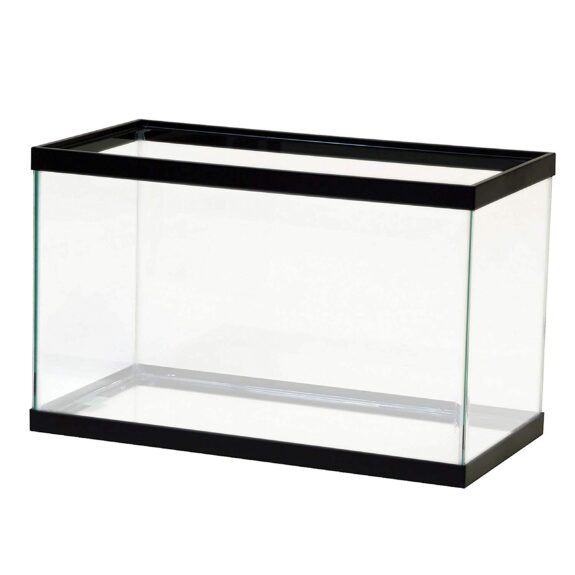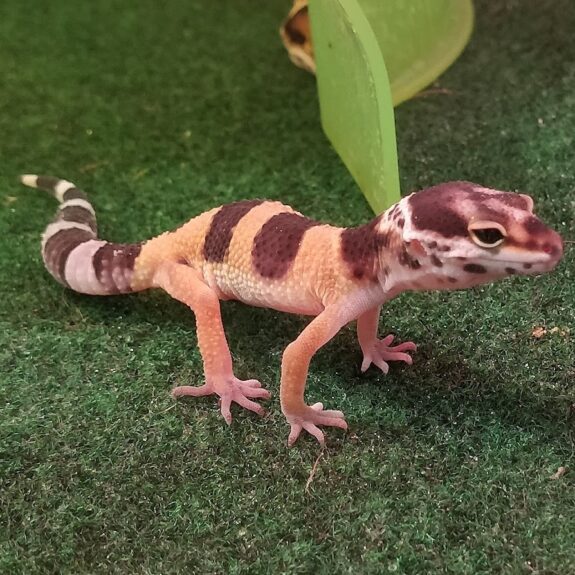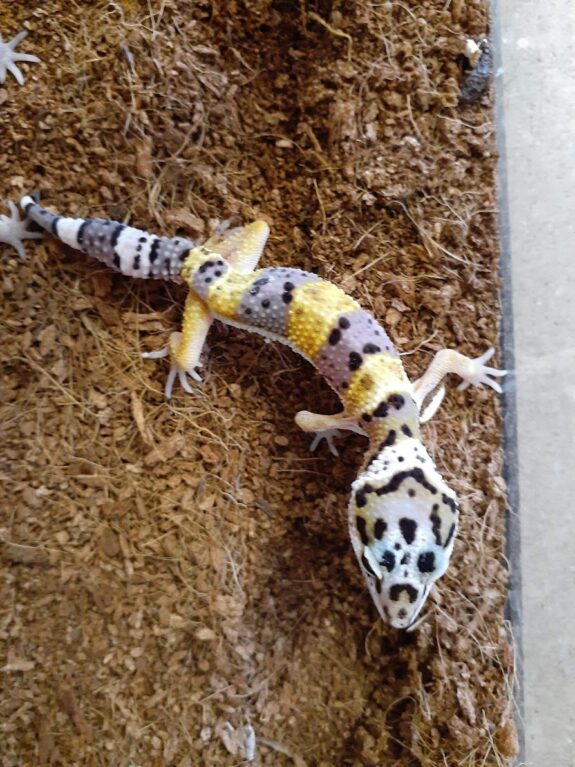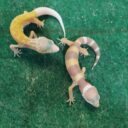Can I keep a gecko in a 10 gallon tank?
In short, yes some species of gecko can thrive in a sufficiently equipped 10-gallon tank. Some smaller species of gecko can even be kept in enclosures smaller than 10 gallons. A 10 gallon tank would be considered a healthy minimize size for an adult leopard gecko, for instance. Larger can sometimes be better but not always. A baby leopard gecko may be able to start in a smaller tank but he will quickly outgrow it. You’ll need to consider how much space you have available in your home, what you can afford, and what you can reasonably keep clean. All these factors and more can affect your gecko’s terrarium size. If you’re housing multiple adult geckos together in the same tank, make sure it’s a larger tank. For instance, a 20-gallon tank would be a minimum size for 2-3 juvenile leopard geckos.

What do geckos need in their terrarium?
What geckos need in their terrarium can vary depending on the species of gecko but as a general rule your gecko will need some basics in order to thrive. Your gecko will need a tank heater of some kind, a substrate that isn’t just bare glass, places to hide, access to fresh water, and an external environment that is stress-free (e.g. no cats vying for a quick meal). Many geckos will thrive with a heat mat as their heat source. Some will prefer a heat lamp though. Determine whether your gecko is a terrestrial or arboreal species and adjust their hot spot as needed.
How do you set up a gecko terrarium?
When setting up a gecko terrarium, a good idea is to start with the substrate and work up towards the lid and lighting. You’ll want to place the gecko’s heat source on one side of the tank, allowing for the other side of the tank to remain at room temperature. This arrangement creates a temperature gradient with a cool side and a warm side – that will allow your lizard to thermo-regulate on its own. Avoid heat rocks as they tend to overheat.

The most important factors when setting up your gecko’s tank will be heat, water, and hides. Make sure your gecko has an appropriately sized water bowl and food bowl as well.
It is also a great idea to add both a cool hide and a warm hide. In other words, two separate hides (if there’s enough room). This will ensure that your gecko has access to the humidity levels it requires.
What should I put at the bottom of my gecko’s tank?
There are many different substrate options for your gecko. Some popular ones include coconut husk, aspen chips, tile, sand, and even paper towels. There are several things to consider here including cost, ease of cleaning, and your own personal preference. In the end you want something you can easily and quickly clean while not breaking the bank.
Reptile carpet is another popular solution for substrate in glass tanks. They don’t provide the same natural habitat feel as some of the other solutions. Many people prefer substrates like carpets as the best option because it does not pose a threat to the gecko’s digestive tract as it cannot be ingested even by accident. Studies have been done that warn leopard gecko owners about gut impaction particularly with sand.

A 10 gallon aquarium can be a great solution for many gecko owners and their lizards. There are some limitations though and gecko owners should be aware of those. A 10 gallon terrarium is not a perfect solution for every situation and in some cases they can be more difficult to properly heat and light. However, a properly set up 10-gallon tank with an appropriately sized gecko, can be a great solution to someone who is new to pet reptiles and would like to start with something that is relatively easy access and doesn’t require a ton of extra space. We think geckos make a great choice!



